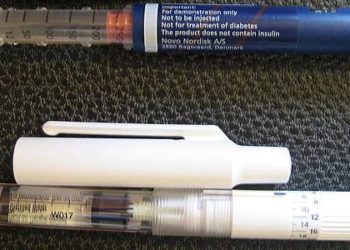Shift work linked to increased risk of diabetes
1. Night, rotating, and irregular shift work was associated with greater risk of developing diabetes mellitus.
2. Increased risk of diabetes was more pronounced in men than women across all types of shift work.
Evidence Rating Level: 2 (Good)
Study Rundown: Diabetes mellitus is a major cause of morbidity and mortality globally and is projected to affect more than 380 million individuals by 2025. The chronic nature of the disease combined with its effects on multiple organ systems translates into substantial economic and societal costs, making identification of modifiable risk factors especially important. Shift work has previously been shown to adversely affect many homeostatic processes ranging from circadian rhythms and hormone secretion to weight gain and adiposity. This study found increased risk of diabetes in groups that work night, rotating, and irregular shifts and not in groups that work evening and mixed shifts. Although this effect was evident in men and women, men had a demonstratively higher risk.
This study represents the first systematically quantified meta-analysis of the effect of shift work on diabetes risk. Strengths of the study include a large patient sample size, correction for publication bias, and subgroup analysis factoring confounders such as occupation, family history, BMI, and physical activity. The weaknesses of this study include not performing a dose-response analysis, lack of consistent definitions for shift work, exposures, and outcomes across studies. This study supports the literature delineating adverse effects of shift work and hints at long term and potentially permanent effects of irregular sleep and eating patterns and a stressful lifestyle. The study also provides clues towards the differential effects of shift work on gender based risk of diabetes. While a prospective study would ultimately cement these findings, this study can help guide public health efforts in mitigating risks for diabetes though appropriate counselling and lifestyle modifications.
Click to read the study, published in BMJ
Relevant Reading: Shift work and vascular events
In-Depth [meta-analysis]: This analysis compiled studies involving a total of 226,652 patients including 14,595 with diabetes mellitus to elucidate the effect of shift work on diabetes mellitus risk. A total of 12 studies were included in the analysis that consisted of seven prospective cohort studies, one retrospective cohort, and four cross-sectional studies from Europe, North America, and Asia. The data was analyzed using pooled and subgroup multivariable adjusted risk estimates. Heterogeneity studies revealed no publication bias, no material change in results from exclusion of individual studies, and excellent inter-observer agreement (κ=0.95). The authors found that odds of developing diabetes was increased by 9% in shift workers when compared to those who had never done shift work (OR 1.09, CI95% 1.05-1.12). Risk was increased more in men (OR 1.37, CI95% 1.20 to 1.56) compared to women (OR 1.09, CI95% 1.05-1.14). Diabetes risk was increased in the night, rotating, and irregular shift groups, but not in the evening or mixed shift groups. Other subgroup analysis looking at geography, a proxy for ethnicity, occupation, and family history did not reveal significant differences in risk, although studies from Africa or South America were not included in the analysis.
Image: PD
©2012-2014 2minutemedicine.com. All rights reserved. No works may be reproduced without expressed written consent from 2minutemedicine.com. Disclaimer: We present factual information directly from peer reviewed medical journals. No post should be construed as medical advice and is not intended as such by the authors, editors, staff or by 2minutemedicine.com. PLEASE SEE A HEALTHCARE PROVIDER IN YOUR AREA IF YOU SEEK MEDICAL ADVICE OF ANY SORT.


![2 Minute Medicine: Pharma Roundup: Price Hikes, Breakthrough Approvals, Legal Showdowns, Biotech Expansion, and Europe’s Pricing Debate [May 12nd, 2025]](https://www.2minutemedicine.com/wp-content/uploads/2025/05/ChatGPT-Image-May-12-2025-at-10_22_23-AM-350x250.png)






